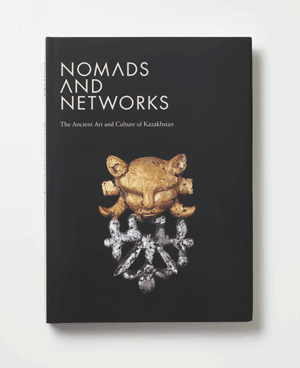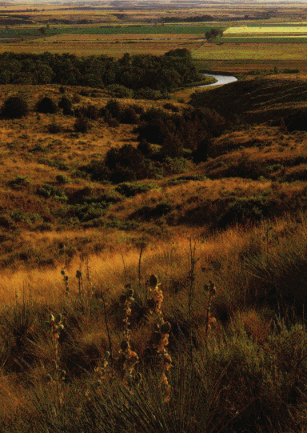Reading ‘The Times’ this morning, and in particular the article by newscaster Jon Snow, got me reminiscing about the history of my relationship with bicycles. It is approaching 10 years since I got into cycling in a major way and I hope you will forgive this uncharacteristically personal story.
Jon Snow and I met on a bike ride around Blois to raise money for a charity, Saving Faces. My former colleague and mentor (a senior barrister who was very kind to me when I was a pupil) fell under the care of a skilled facial surgeon who was an old University friend of Jon’s; hence our mutual support for this worthy cause.
Until 2002 the extent of my cycling was to cycle the 5 miles from my home in Earl’s Court to my work in The Temple, on an old battered bicycle. I was terrified of traffic and my route took me through quiet sidestreets through parks and even (I now shudder to recall) along some pavements. I invariably wore ‘ordinary’ clothing. It would take me around half an hour to cover that distance. I was unfit, slow and posed no danger even to pedestrians. I felt I was doing my bit for the environment and to keep fit. Devoting the hours I now do to cycling was in those days completely unthinkable with the twin demands of trying to make my way in my profession and of a young family. I cycled but had no real interest in cycling. I had only the vaguest idea who Lance Armstrong was, or when the Tour de France took place, and had no real conception that sportsmen, let alone ordinary cyclists, could easily travel distances of the order of 100 miles.
However I was prepared to make an effort for this charity ride. I went along to my local bike shop (I had now moved to Berkshire) and bought the cheapest road bike they had. It felt very awkward having drop handlebars and such skinny tyres and I struggled with learning how to change gears through manipulating the brake levers. Not only did I accept advice as to the bike, I also bought a pair of cycling shorts though these were always safely concealed under an outer garment. I cycled this bike through parks and cycle tracks to Staines, 10 miles off, each morning and then put my bicycle in the guard’s van, back in the days when cycles on trains and rush hour were not mutually exclusive.
On 7th April 2002 I started the 100 mile ride with Jon in the Loire countryside. Jon had all the kit and a bike that cost more than I imagined a bike could. He laughed at me in my old boat shoes. I reciprocated with astonishment at his ‘clipless’ pedals, I had seen nothing like them and he patiently explained their advantages. To Jon’s mild surprise I kept up with the lead group on this ride and even chased them down successfully after I had had to detach and discard my plastic toe straps (into a bin, Mr Parris, if you are reading) which were disintegrating under the strain of the ride.
Once I got home new pedals were required so I returned to the local bike shop and got some ‘clipless’ ones. After a few embarrassing falls I never looked back. I kept cycling to Staines because I enjoyed it and even sometimes beyond though my continuing fear of traffic made it difficult to advance far into London. Doubly affected one year by Breast Cancer I undertook with friends a charity ride to Cambridge for ‘Breakthrough Breast Cancer’. Spotting that I could do that, another colleague (who sadly but tellingly has been off his bike now for six months as the consequence of a vicious and unprovoked assault when he was pushed off his bicycle in the lanes of Kent) invited me to join him on a French sportive ride where my enjoyment of cycling reached an even higher level. Shortly thereafter I ended up in a racing club, got used to the advantages of lycra and became truly hooked (to the cycling).
Early in the process of becoming a cyclist I suffered the worst ‘accident’ I have yet had on a bicycle. I was travelling to Staines one morning along a cyclepath. The cyclepath took me onto a roundabout for a right turn towards Staines. A motorist, who did not expect me or see me, came from my left broadside into me. My precious first roadbike was folded in half under her wheels while I got a sharp smack to the hip from her front and a second sharp smack to my shoulder from her windscreen before being thrown forward onto the tarmac as she finally braked.
It was entirely her fault not giving me priority on that roundabout. However the accident would not have occurred had I not been so fearful of traffic. When I cover the same route now I am not on the cycletrack emerging from a little used road onto the roundabout, I am on the main road, dominating my lane where I cannot fail to be seen. I read John Franklin’s excellent book ‘Cyclecraft’, trained to Bikeability 3 and became a fully converted vehicular cyclist. I have had a couple of minor collisions with careless motorists since but they have been anticipated and controlled, and have left me with no significant injury. The three occasions I have needed medical treatment since the Staines crash have all followed from my sliding to the ground in icy or greasy conditions when I have been pushing the boundaries.
So, since I became a ‘vehicular’ cyclist I have had no serious collisions with traffic. I have however been shouted at, abused and even, once, assaulted. An explanation, though certainly no excuse, for this is that many motorists and even some cyclists do not understand my positioning. I will, when my safety requires it (which is much of the time), take the primary road position (centre of leftmost lane relevant to my direction of travel) and never ride closer to the kerb than the secondary position - a fluid concept but broadly about ½ metre left of the traffic flow (where the vehicles would put their nearside wheels if you were not there) but never (ok, hardly ever, and usually I have regretted the exceptions) closer than ½ metre from the kerb. This naturally leads to avoidance of the lethal undertaking manoeuvre (forget the red lights it is the cyclists who undertake me, six inches from the kerb, when I am slowing for a hazard or even indicating to turn left, that wind me up).
Getting back to The Times, I have praised their campaign and like tens of thousands of others signed up my support. Their guide to safe cycling does make the point about positioning but it is a bit half-hearted compared (say) to the advice to wear a helmet. Point 3 is that ‘Some cycling instructors say that your primary cycling position should be in the middle of the road and your secondary position to the left’. This gives the impression it is potentially a minority view and so far as I am aware it is not. Every suitably qualified instructor will surely agree that the primary position is in the middle of the lane. By contrast Point 1 in the same guide is to be sure you have the right kit namely, Helmet, High viz jacket. Over the page is a double spread about James Cracknell and his belief that cyclists who are not wearing helmets are irresponsible and selfish. No some people believe you should wear a helmet about this
Vehicular cycling is though not an easy solution for everybody. The main reason for this, however, is because too few motorists understand Bikeability training. If they did and it were part of the requirements for a driving licence, then surely the old and the young as well as the bloody-minded would find it easier to do what was universally expected of them rather than to do what is currently regarded with suspicion or even aggression. It is not, in my view, inherently difficult for bicycles and cars to share the road once everyone is clear about the rules.
This brings me finally to Jon Snow’s contribution, I am very favourably disposed towards Jon who I have explained was an inspiration to me 10 years ago (and I love it when I hear him on TV mentioning that he hopped on his bike to interview the Prime Minister/President of the World Bank/Pope or whomever). I agree with his article entirely until he gets to the point where he says cars and bikes do not mix and cannot share the same road, he argues for segregation. I can see the force of providing infrastructure which will lessen the perception of hazard to would be cyclists. However saying cars and bicycles cannot mix is perilously close to the motorist view, which I have encountered, that cyclists should not be on the road. I am left worrying today that this could all develop into an emphasis on danger, helmets and segregation.
I have referred to everybody knowing the rules. This to me is key, as is enforcing the rules. This is the part that is too often glossed over. Rebecca Romero has it right in her contribution when she says that the critical thing is respect for road users who aren’t in motorised vehicles. ‘I think the penalties for causing injury or death on the road are far too light. The consequences-the deterrent-have to be massive’. I am encouraged to note that this is a stand being taken by British Cycling following the tragic death of Rob Jefferies in Wareham. We often talk about new laws. The truth is we have laws but they are not adequately enforced or end up being watered down from the deterrent they could be. There is a literal lawlessness on the roads which would never be countenanced in the workplace or anywhere else. Too often the authorities are just not interested in enforcing laws that could save lives, or give a passable impression of prejudice against cyclists when it comes to the enforcement of the rules.
Is it divisive, going around as I do expecting motorists who endanger or threaten me to face consequences for their actions? I do not think so. There is a small but dangerous core of motorists who are actively hostile to the presence of cyclists on the road. For some, education and explanation may never be enough to alter their attitudes and behaviour. Appeasement never works and ultimately these people should be denied the privileges conferred by a licence to drive.












